NCERT Solutions Class 6 Maths Chapter 3 Playing With Numbers Exercise 3.2 are provided here. These solutions are prepared by expert teachers to guide you in your exam preparation. The solutions are always prepared by following NCERT guidelines, so that it covers the whole syllabus accordingly. Our CBSE Class 6 Maths Solutions Chapter 3 Exercise 3.2 Solutions are very helpful in scoring well in examinations.
NCERT Solutions for Class 6 Maths Chapter 3 Playing With Numbers Exercise 3.2
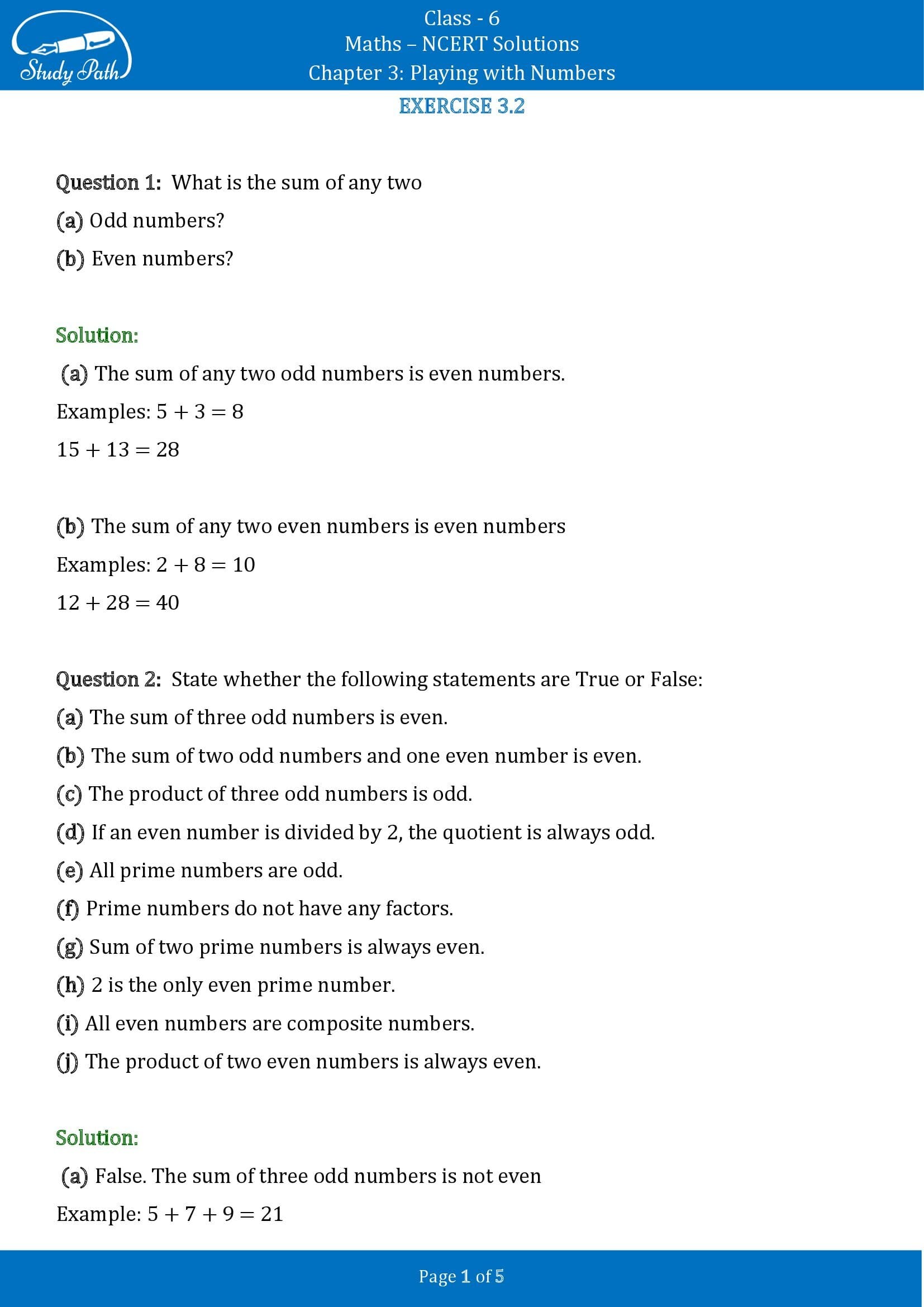
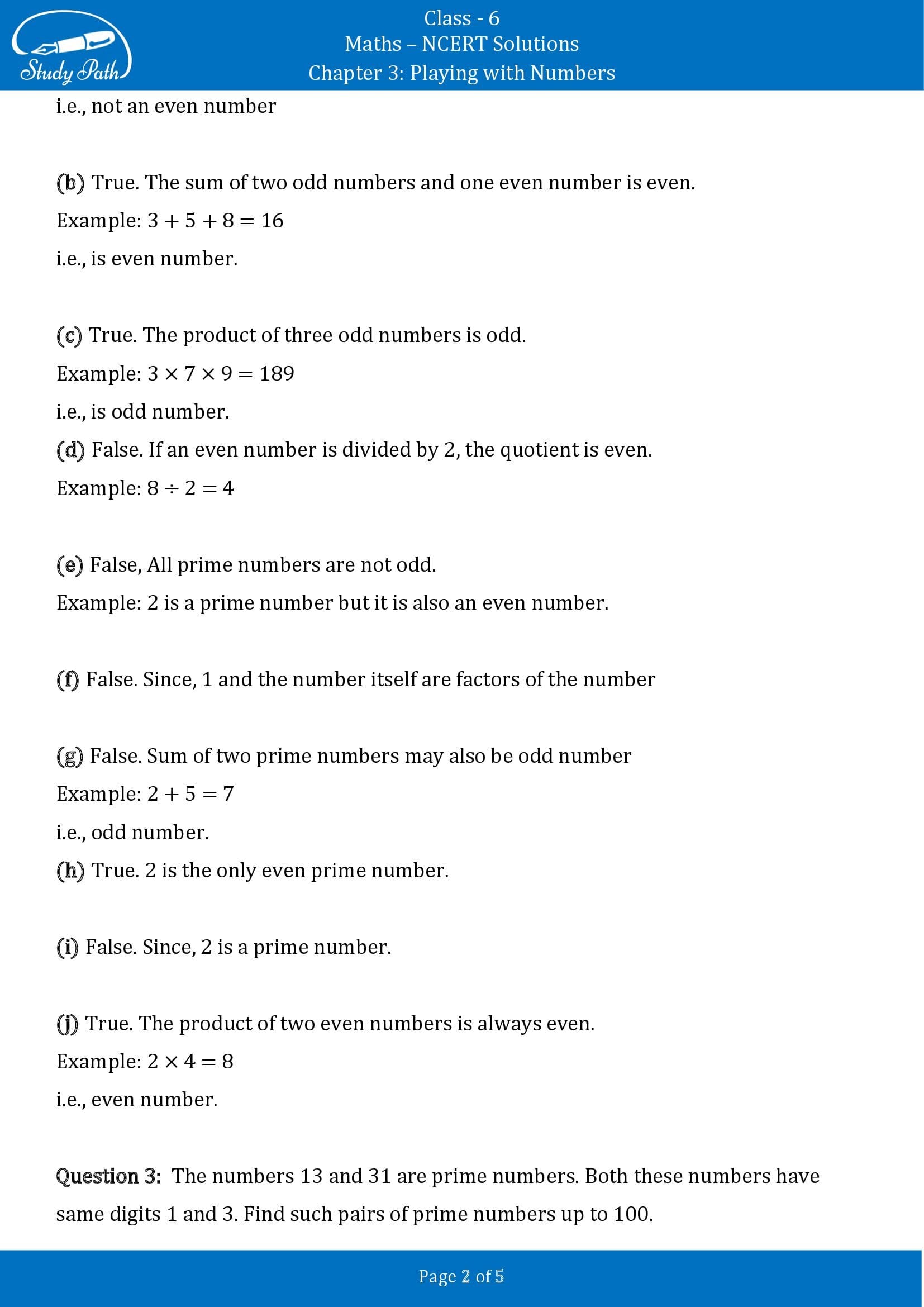
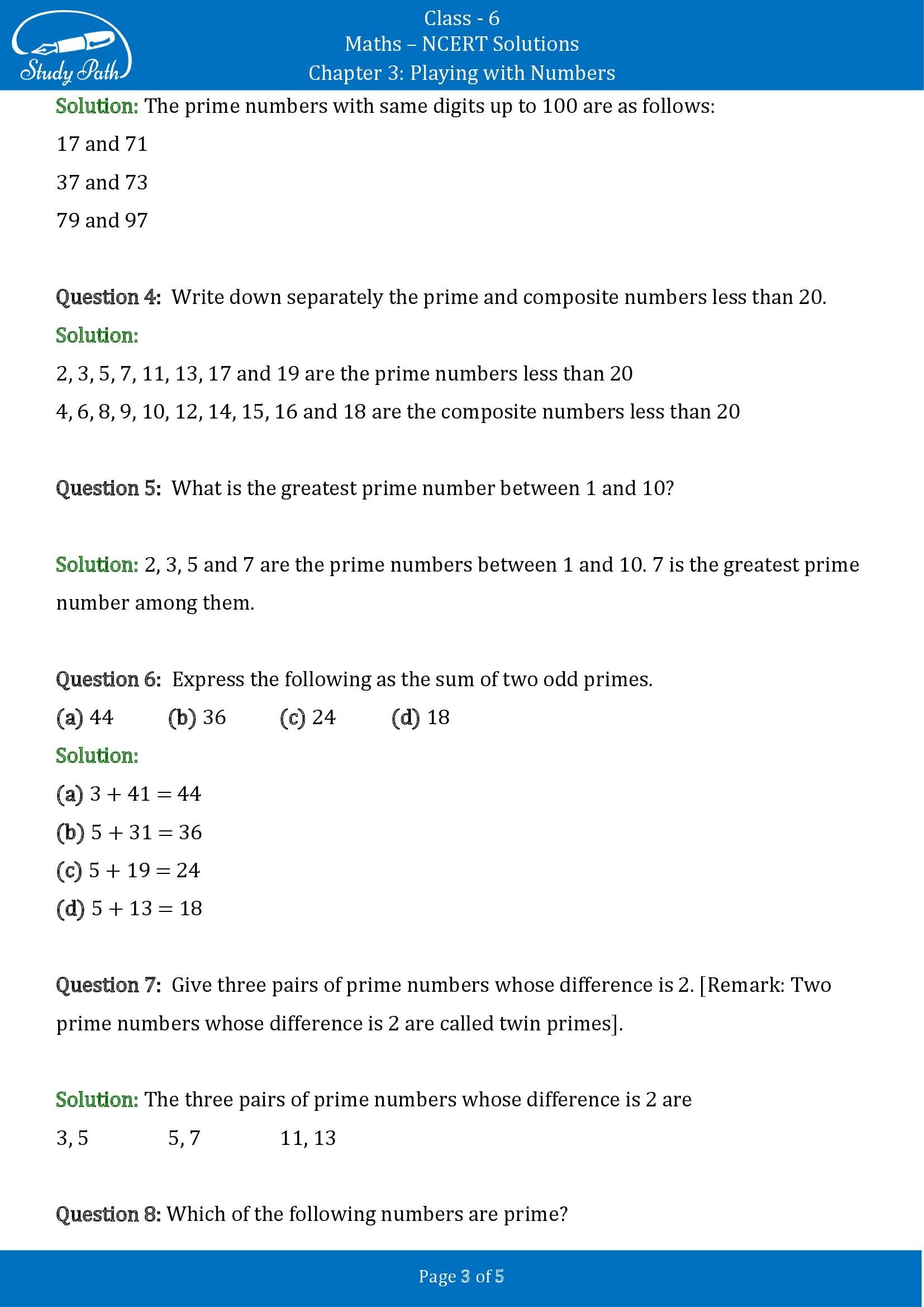
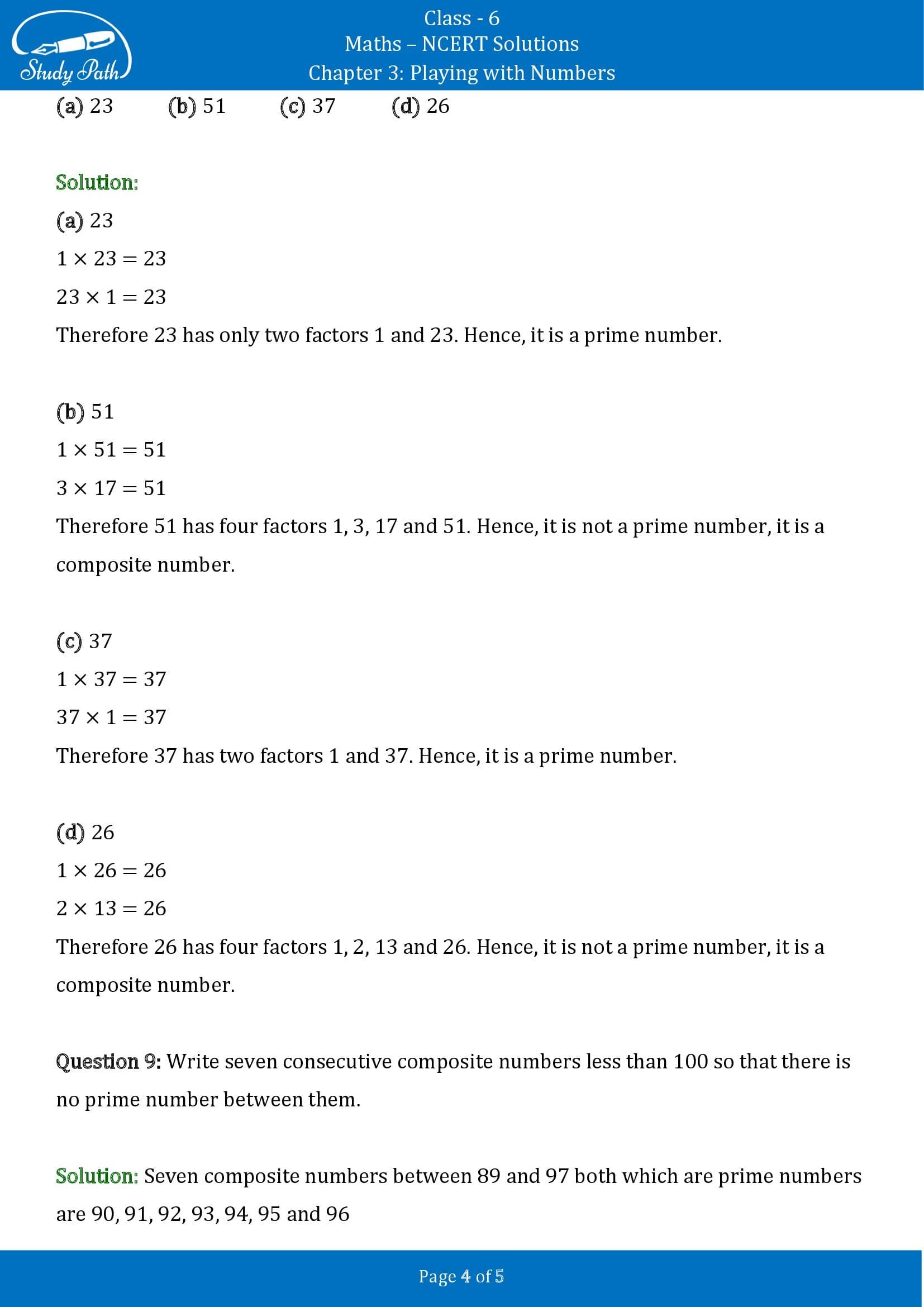
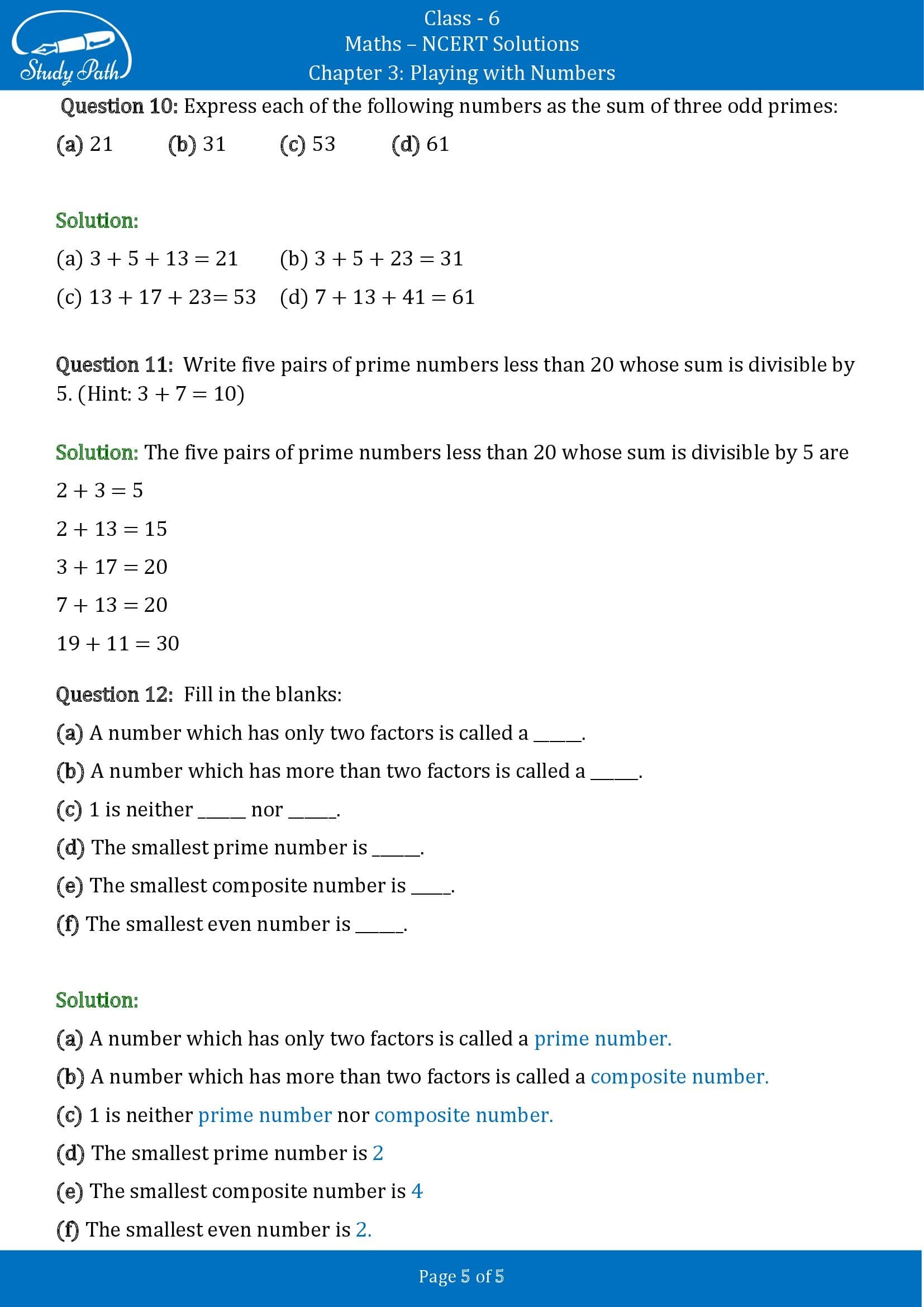
EXERCISE 3.2
Question 1: What is the sum of any two
(a) Odd numbers?
(b) Even numbers?
Solution:
(a) The sum of any two odd numbers is even numbers.
Examples: 5 + 3 = 8
15 + 13 = 28
(b) The sum of any two even numbers is even numbers
Examples: 2 + 8 = 10
12 + 28 = 40
Question 2: State whether the following statements are True or False:
(a) The sum of three odd numbers is even.
(b) The sum of two odd numbers and one even number is even.
(c) The product of three odd numbers is odd.
(d) If an even number is divided by 2, the quotient is always odd.
(e) All prime numbers are odd.
(f) Prime numbers do not have any factors.
(g) Sum of two prime numbers is always even.
(h) 2 is the only even prime number.
(i) All even numbers are composite numbers.
(j) The product of two even numbers is always even.
Solution:
(a) True. The sum of two odd numbers is even
Example: 7 + 9 = 16
i.e., even number
(b) True. The sum of two odd numbers and one even number is even.
Example: 3 + 5 + 8 = 16
i.e., is even number.
(c) True. The product of three odd numbers is odd.
Example: 3 × 7 × 9 = 189
i.e., is odd number.
(d) False. If an even number is divided by 2, the quotient is even.
Example: 8 ÷ 2 = 4
(e) False, All prime numbers are not odd.
Example: 2 is a prime number but it is also an even number.
(f) False. Since, 1 and the number itself are factors of the number
(g) False. Sum of two prime numbers may also be odd number
Example: 2 + 5 = 7
i.e., odd number.
(h) True. 2 is the only even prime number.
(i) False. Since, 2 is a prime number.
(j) True. The product of two even numbers is always even.
Example: 2 × 4 = 8
i.e., even number.
Question 3: The numbers 13 and 31 are prime numbers. Both these numbers have same digits 1 and 3. Find such pairs of prime numbers up to 100.
Solution: The prime numbers with same digits up to 100 are as follows:
17 and 71
37 and 73
79 and 97
Question 4: Write down separately the prime and composite numbers less than 20.
Solution: 2, 3, 5, 7, 11, 13, 17 and 19 are the prime numbers less than 20.
4, 6, 8, 9, 10, 12, 14, 15, 16 and 18 are the composite numbers less than 20.
Question 5: What is the greatest prime number between 1 and 10?
Solution: 2, 3, 5 and 7 are the prime numbers between 1 and 10. 7 is the greatest prime number among them.
Question 6: Express the following as the sum of two odd primes.
(a) 44
(b) 36
(c) 24
(d) 18
Solution:
(a) 3 + 41 = 44
(b) 5 + 31 = 36
(c) 5 + 19 = 24
(d) 5 + 13 = 18
Question 7: Give three pairs of prime numbers whose difference is 2. [Remark: Two prime numbers whose difference is 2 are called twin primes].
Solution: The three pairs of prime numbers whose difference is 2 are
3, 5 5, 7 11, 13
Question 8: Which of the following numbers are prime?
(a) 23
(b) 51
(c) 37
(d) 26
Solution:
(a) 23
1 × 23 = 23
23 × 1 = 23
Therefore 23 has only two factors 1 and 23. Hence, it is a prime number.
(b) 51
1 × 51 = 51
3 × 17 = 51
Therefore 51 has four factors 1, 3, 17 and 51. Hence, it is not a prime number, it is a composite number.
(c) 37
1 × 37 = 37
37 × 1 = 37
Therefore 37 has two factors 1 and 37. Hence, it is a prime number.
(d) 26
1 × 26 = 26
2 × 13 = 26
Therefore 26 has four factors 1, 2, 13 and 26. Hence, it is not a prime number, it is a composite number.
Question 9: Write seven consecutive composite numbers less than 100 so that there is no prime number between them.
Solution: Seven composite numbers between 89 and 97 both which are prime numbers are 90, 91, 92, 93, 94, 95 and 96
Question 10: Express each of the following numbers as the sum of three odd primes:
(a) 21
(b) 31
(c) 53
(d) 61
Solution:
(a) 3 + 5 + 13 = 21
(b) 3 + 5 + 23 = 31
(c) 13 + 17 + 23= 53
(d) 7 + 13 + 41 = 61
Question 11: Write five pairs of prime numbers less than 20 whose sum is divisible by 5. (Hint: 3 + 7 = 10)
Solution: The five pairs of prime numbers less than 20 whose sum is divisible by 5 are
2 + 3 = 5
2 + 13 = 15
3 + 17 = 20
7 + 13 = 20
19 + 11 = 30
Question 12: Fill in the blanks:
(a) A number which has only two factors is called a ______.
(b) A number which has more than two factors is called a ______.
(c) 1 is neither ______ nor ______.
(d) The smallest prime number is ______.
(e) The smallest composite number is _____.
(f) The smallest even number is ______.
Solution: (a) A number which has only two factors is called a prime number.
(b) A number which has more than two factors is called a composite number.
(c) 1 is neither prime number nor composite number.
(d) The smallest prime number is 2
(e) The smallest composite number is 4
(f) The smallest even number is 2.
Access NCERT Solutions for Class 6 Maths Chapter 3 Playing With Numbers – All Exercises
Below we have provided the links to check solutions of the other exercises of the chapter.